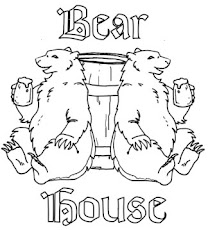
To minimise the mess, I wrapped some of the husks in a towel.

As I was working on the table, I could not hit with the nunchucks as they were designed to be used. But hitting with both sticks still worked really well.

It did not take much work to get a the majority of grains to fall off the husks.

I removed all the main rubbish and put the rest in a bowl. Removing the chaff was easy. I went outside in a rain break and started to throw the contents of my bowl carefully into the air at the same time as I blew on it, then catching the grains in the bowl again. It only took a few turns to remove more or less all the rubbish.

The end result was nice and mostly clean grains.

All in all, I managed to get about a kilo of grains. Not much to brew on but I hope to be able to make a 5 litre batch from it.
Next will be the malting... Watch this space.

1 comment:
Very interesting. I hope you didn't catch your fingers when slamming the rice flail onto the tea towel.
It's rare to come across any home brewer who malts his own, but home growing and home threshing of the barley is really impressive.
I wonder what pre-modern ale would have tasted like. Marston's sell a beer called Owd Rodger that's supposedly based on a recipe believed to be at least 500 years old. Still and all, the recipe is only part of it, and I'd suppose that the barley and hop varieties used by Marston's - and the strain of yeast - might be quite different. And the processing would be different, too. I've read that before modern kilning methods were introduced (initially in England with "Pale Ale" malt) malt would have been dried over solid fuel and consequently smeeched. I suspect old-time beer would have had a distinctly smoky flavour besides often being not particularly "bright".
Post a Comment